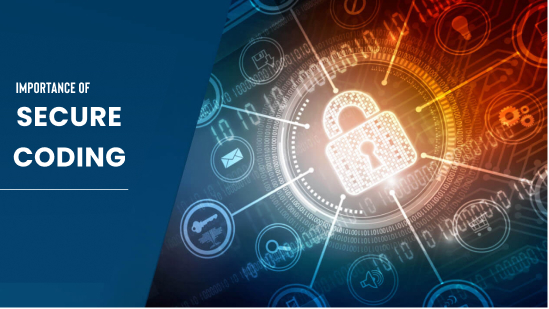Exploits for security flaws demonstrate how weak software code might be. At the core of how your program functions are software code. Your entire program may be subject to cyberattacks if your code contains security flaws. With this Software security has turned its importance.
How frequently unauthorized users take advantage of security flaws in software can be shown by looking at tech headlines from the previous year. Apple and Google, two major players in the technology industry, discovered operating system flaws.
What Is Secure Coding?
By adhering to specific best practices and rules, referred to as safe coding standards, secure coding makes it simpler for developers and programmers to weed out common weaknesses in their software. It is crucial to utilize specific coding techniques since they eliminate often exploited software flaws and shield against online attacks.
Designing executable programs in a language your computer can understand is coding, often known as computer programming.
Do we Really Need Secure Coding?
It's challenging, if not impossible, to defend yourself from unknown dangers. This justifies the significance of threat modeling. It entails detecting possible dangers and formulating defenses to stop or prevent them from happening. A threat modeling exercise should be conducted frequently to ensure that any new dangers are noticed.
Secure coding depends on keeping your development team informed and adequately trained about new secure coding standards. You can't assume that programmers can write secure code right away. Instead, they must be instructed in the many secure coding techniques and made aware of the most widespread security flaws.
Advantages of Secure Coding
Here is a list of a few advantages that explain the Importance of secure coding.
Code for Password Management
Although saving passwords in source code might seem obvious, this is a widespread practice among engineers. Attackers who take advantage of the deployment environment and constitute a severe threat to application security can simply gain access to such passwords.
The Mirai infection in 2016 is one major cybersecurity problem resulting from keeping passwords in the source code. Over 400,000 devices were inadvertently infiltrated by this malware, which searched the Telnet service on Linux-based IoT boxes for hard-coded passwords before using those passwords in a brute-force attack. Uber's data breach, which exposed the personal information of over 600,000 drivers and 57 million consumers, is another noteworthy incident.
Code Repository Security
Developers should refrain from committing secrets and credentials to their remote repositories. Secret passwords and logins should never be kept in developer code because malevolent people may use them to access resources like deployment environments or accounts held by other parties.
In 2019 and 2020, unscrupulous users held hundreds of projects for ransom by scanning public GitHub repositories for public keys. Fortunately, hidden scanning tools can find secret passwords and keys and alert you before anyone uses them.
Dependency Security
According to estimates, open-source libraries and frameworks make up around 80% of the code in current applications. Additionally, about 27% of the libraries accessible via the internet have known vulnerabilities that have been made public.
What's concerning is that most businesses and independent developers still utilize the libraries in their programs without patching the flaws. In some situations, a weak library might provide malicious actors access to private information, the ability to conduct transactions, and complete control over an application.
Container Security
If your container image has weaknesses, your business might be hit with fines, missed productivity, and sales totaling millions of dollars. An adequately maintained container image stops problems from deploying and stops client data from leaking.
Worldwide adoption of containerizing apps has increased and will do so over the coming ten years. Many criminals may attempt to exploit folks unaware of container image flaws.
Web Page Security
Numerous negative occurrences may result from an exposed private key. For instance, if your private key is made public, anyone can call whatever API they like. Having the capacity to leak private information, overburden your database with post requests, and erase data from your database are examples of this.
DDoS Mitigation and Network Security
In today's internet environment, distributed denial-of-service assaults are a severe threat. In recent years, it has also been changing. Attacks are multiplying and becoming more intricate.
DDoS attacks could target companies of all sizes, financial institutions, organizations, governments, etc. Adopting anti-DDoS procedures and becoming knowledgeable about other web security issues is essential.
OAuth Security
Due to ambiguities in how the OAuth standard is intended to perform pattern matching, improperly configured authorization servers are vulnerable to URL redirection attacks. It is common knowledge that malicious actors attack authorization servers with inadequate URL redirect validation, giving the attackers access to access tokens and compromising client identification or authentication.
You must set up your authorization servers, so redirection is correctly checked to avoid sending tokens to malicious servers.
Your application systems' essential software makes them vulnerable to harmful malware and unauthorized users. Therefore, you must look for any weaknesses and implement the necessary security measures; otherwise, the entire application may be at risk.
Secure coding procedures identify and eliminate flaws that online criminals could use before they appear in the finished code. By creating safe code, hackers will have more difficulty accessing systems and apps, minimizing the risk of data breaches.
Hackers use more complex techniques daily to identify and exploit security holes in computer systems. The best and most efficient way to stop this threat is to use secure coding, which protects the system from faults and failures.
The developer will still need to maintain and update the code standards after that. You must ensure that your development staff has received instruction in all secure coding practices. You might have a fantastic team of subject matter experts who create useful applications. It might be disastrous if they are unaware of the security concerns or how to mitigate them.

















Post Comments